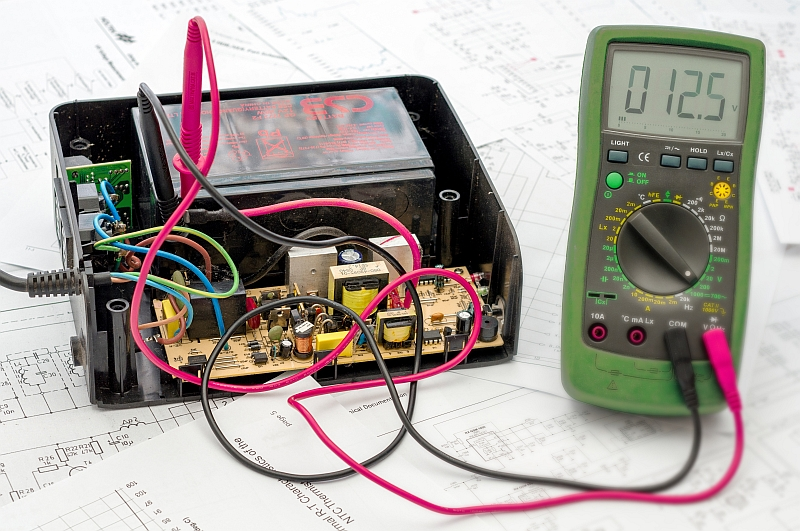 Many aspects of technology for uninterruptible power supplies have rapidly advanced, but one that is still firmly rooted in a traditional approach is batteries. In particular, lead acid batteries still feature as a dominant and essential part of any typical energy storage mechanic within a UPS operation. They require on-going testing, replacement and monitoring to make sure they remain fully operational and ready for action. Yet surprisingly, despite the significant advances in batteries for other electronic equipment, such as smart phones and vehicles, there has been little evolution in the battery arena for a number of decades. So the time is ripe for all the lessons learned in other technological environments, to spill over into the critical power world.
Many aspects of technology for uninterruptible power supplies have rapidly advanced, but one that is still firmly rooted in a traditional approach is batteries. In particular, lead acid batteries still feature as a dominant and essential part of any typical energy storage mechanic within a UPS operation. They require on-going testing, replacement and monitoring to make sure they remain fully operational and ready for action. Yet surprisingly, despite the significant advances in batteries for other electronic equipment, such as smart phones and vehicles, there has been little evolution in the battery arena for a number of decades. So the time is ripe for all the lessons learned in other technological environments, to spill over into the critical power world.
Yes, Lithium-ion batteries are already having an impact, but what should you be considering when looking at the battery options?
- Prime time – the desire for data, power and information is not going to disappear, in fact it is rapidly accelerating with a danger of exceeding capability. So, every data centre, infrastructure or building with critical power requirements has to be several steps in front and unfortunately traditional lead-acid battery options are increasingly going to struggle to meet this demand.
- Significant capacity – delivering substantially more energy and power, Lithium-ion batteries are ideally positioned to cope with the rising energy requirements that many operations now expect of their battery support.
- Space advantages – the power to space ratio that these batteries provide, taking up a third or less than conventional lead-acid batteries means a reduced UPS footprint and importantly weight, which in turn means spaces, can be used more effectively.
- Reduction in cooling requirements – their smaller size also translates into reduced cooling requirements resulting in more flexibility of where to install and also the associated costs of extensive cooling.
- Reduced sensitivity – temperature fluctuations have limited effect on lithium-ion battery life, with them being able to withstand significantly wider temperatures ranges.
- Increased visibility – more sophisticated battery monitoring systems means energy storage and the battery’s health can be checked and potentially predict UPS failures.
- Extensive life expectancy – the cost of battery replacement (which can be costly and potentially include extraction and installation costs alongside the hardware, not to mention system down time) can be significantly reduced as Lithium-ion batteries are expected to last far more than the usual 10 years.
- Reliability of energy – a UPS battery needs to kick in quickly just when you need it, and kick in with quite some power and only really for a relatively short period of time, until the generator establishes itself. This is contrary to how many other batteries operate, which is where the right Lithium-ion battery is ideally suited to meet this instant and strong demand.
- Lower total cost of ownership (TCO) – easily more competitive, Lithium-ion batteries may initially be more expensive to purchase, but as they last almost twice as long, ultimately their pay-back is assured. Plus as they are smaller, they save costs in terms of both the physical space they take up and their cooling requirements. However, it is important to not just consider the field life comparison as the technology is very different. Traditional sealed lead acid batteries require a pressure valve for releasing hydrogen gas should the gas recharging combination cycle run away with itself, so the Lithium-ion battery also eliminates the risk of release of COSH controlled chemicals and explosions.
- More environmentally friendly – obviously being recyclable and not containing hazardous materials is important, but in reality to give this a true view in terms of its environmental stance we need to consider the entire aspect of the Lithium-ion battery and their overall lower consumption of energy and cooling. This includes their requirement for less energy to keep them charged, plus they self-discharge at a lower rate than lead acid batteries. Granted, it is important to bear in mind the need to have a battery management system, which might potentially consume an equivalent amount in terms of energy.
With ASHRAE and other organisations recommending increasing data centre temperatures to save on cooling costs, Lithium-ion batteries are likely to become a core aspect of uninterruptible power supplies, as they are much better suited to these warm environments than their traditional counterparts, so why not try our TCO Comparison service between Lithium-ion and sealed lead acid batteries. In addition, the overall design of a data centre is likely to shift, as they may negate the need for separately climate controlled rooms completely, with them being installed alongside the UPS in the IT room. So, the times are changing and we are on the cusp of entering a new arena in terms of UPS installation and management and it will be interesting to see the ripple effect that the use of Lithium-ion batteries are going to create in data centre design.
Martin Pearce
Sales Director, Critical Power
Mob : 07791 110385

